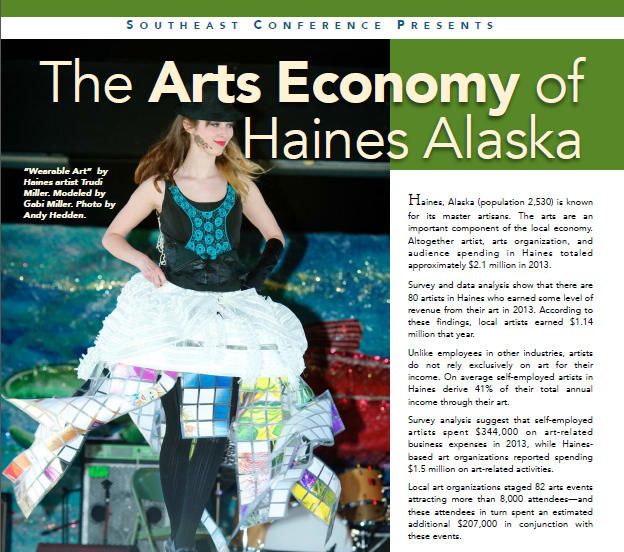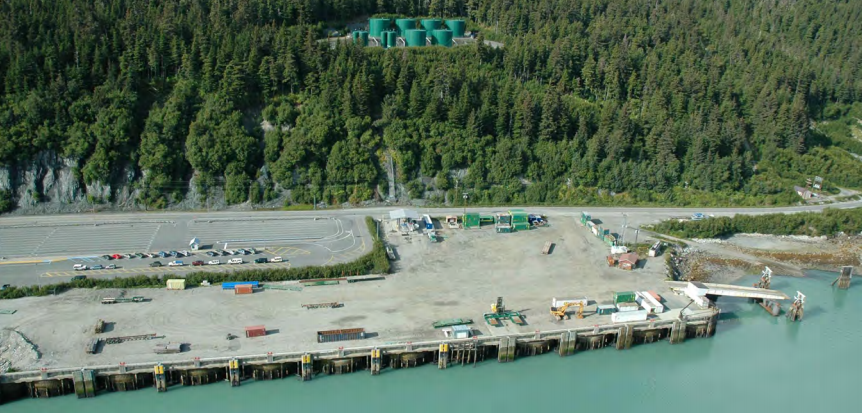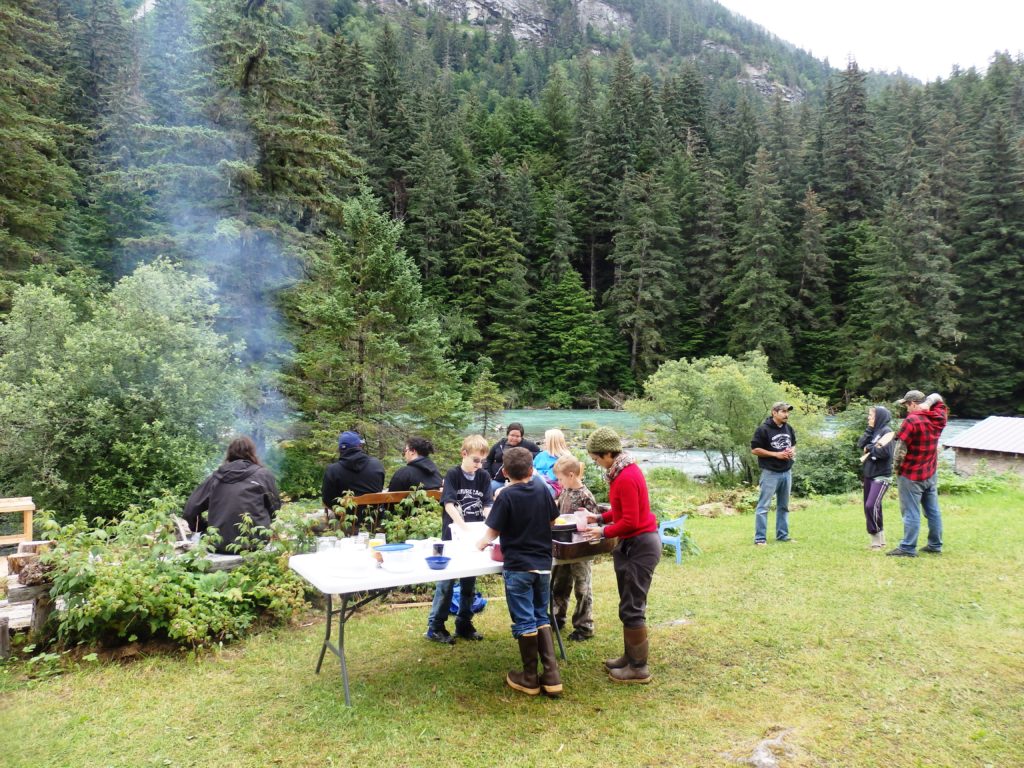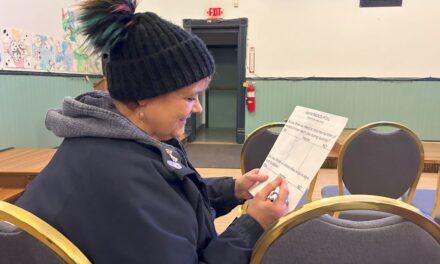A new study from Southeast Conference and Rain Coast Data puts numbers and percentages to something people in Haines know to be true: artists are a big part of the economy.
“I think it kind of snowballs. Like, an artist comes to town, they meet us or other artists and they go, ‘wow this is really cool,’ and we’re all friendly, we’re all family. And people stay because of that,” artist John Svenson said a couple months ago as he and his wife Sharon worked on a commissioned mosaic mural. They’ve lived in Haines for 40 years.
The Haines arts economy report shows how artists, like the Svensons, contribute to the economy.
It all started last fall with Southeast Conference’s interest in Southeast Alaska’s arts economy. The conference asked Juneau consultant Meilani Schijvens of Rain Coast Data to compile a report.
“You don’t have a lot of data on the arts from traditional data sources,” Schijvens said. “So what we decided to do was to create a region-wide survey in which we would try to get that information directly from paid artists themselves across the region.”
The response was huge — 600 paid artists from around Southeast filled out the survey. Schijvens also used data from sources like the US Census Bureau and Department of Labor. (Note: The numbers in the studies are not actuals, but estimates based on data and survey responses.)
Sixty paid artists from Haines responded for that study, a high enough rate to make it easy to do a locally-focused report. Carol Tunyman of Alaska Arts Confluence requested just that, and the Haines Borough Convention and Visitors Bureau paid for it.
Schijvens released the Haines Arts Economy report last week.
Haines has three times as many paid artists as the average US town. Schijvens found there were 80 artists who earned revenue from their art in 2013. That includes both independent artists and employees of arts organizations.
Artists, art organizations and audience spending in Haines totaled about $2.1 million in 2013. Local artists earned $1.14 million from their art that year.
In terms of average annual profit for independent artists, Haines ranked fourth in Southeast. The Hoonah-Angoon area was first, then Skagway and Ketchikan. Haines artist made an average of $7,500 and Skagway artists made an average of $8,440. The regional average is $5,100.
“It’s a larger piece of total earnings for Haines artists than it is for the average across the region,” Schijvens said.
Paid Haines artists derive an average of 41 percent of their total annual income through their art. But more than a fifth of them rely entirely on art for their income, compared to just nine percent of Southeast artists as a whole.
However, Haines has a much lower percentage of paid musicians than the rest of Southeast. Fourteen percent of all paid artists in Southeast are musicians, compared to just three percent in Haines.
“And that makes sense because in Juneau you have the symphony, opera, you have more options for paid musicians,” Schijvens said. “You don’t have as many options to be paid for music in Haines.”
Forty percent of artists identified their medium as visual and tangible arts, 16 percent are Alaska Native artists and 14 percent are in performing arts.
Volunteers are also an important part of the arts community. There are about 500 arts volunteers in Haines who contributed more than 23,000 volunteer hours in 2013.
One page of the report is dedicated to testimonials from Haines artists and art supporters.
The testimonials mention things like the historical importance of art to Natives in the area, how the dramatic landscapes of Southeast inspire artwork, and art contributing to the tourism industry in Haines.
“I think it does speak to how significant and important art is to the fabric of the Haines community,” Schijvens said. “And reading those responses, it tells a story that the numbers don’t tell necessarily.”
Carol Tunyman of the Alaska Arts Confluence says she thinks the strong art community in Haines stems from the history of Tlingit art.
“It’s just a continuation, it’s a beautiful area, it inspires people,” Tunyman. “And even if they don’t know about the Tlingit art when they come up here, they find out about it and that’s even more inspiring. So it’s a long tradition of art and I think that’s why artists are inspired to come here.”
Tunyman points out that the study analyzes data from 2013, so newer art developments like the Chilkat Center renovations and the Fort Seward Interpretive Project are not included.
She hopes this data can be used as a benchmark to study how the art economy in Haines grows over time.











All of this, and no art museum.